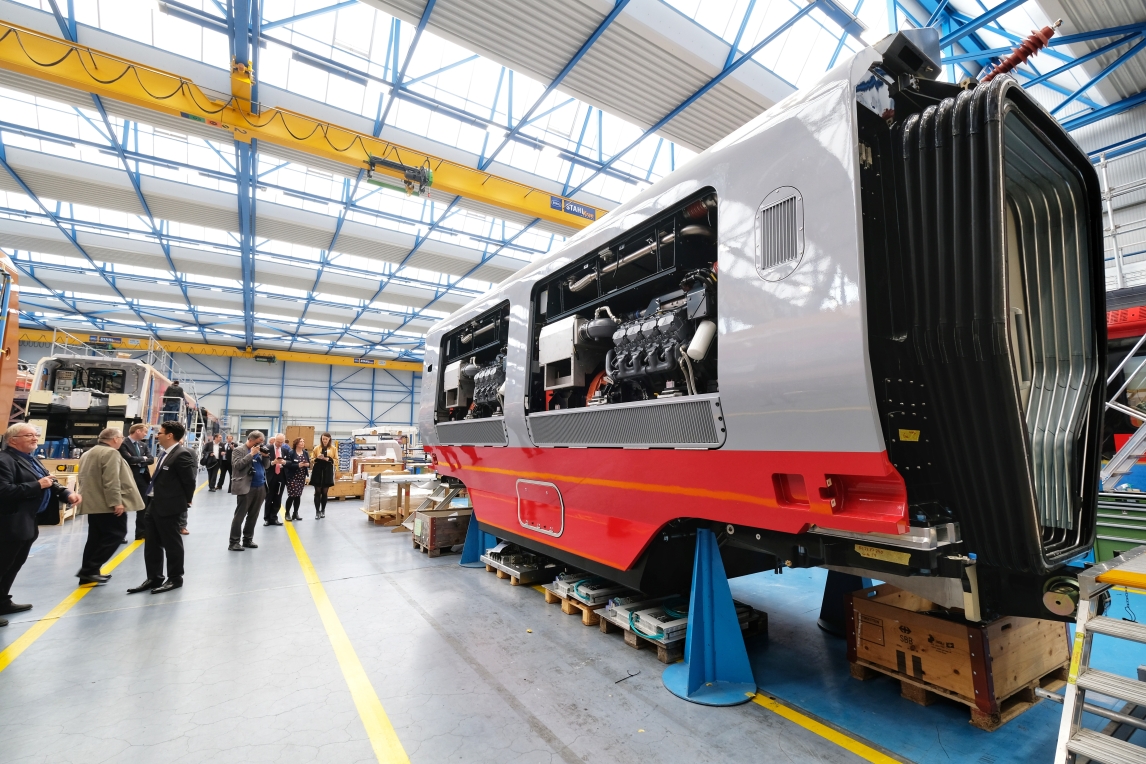Published on: Friday, 4 May 2018
Last updated: Thursday, 31 May 2018
New diesel trains currently being built for Greater Anglia will be greener and more efficient than the company’s existing trains.
All of Greater Anglia’s existing diesel trains are being replaced with “bi-mode” trains which can switch between diesel and electricity power.
Stadler is building 24 four-carriage and 14 three-carriage bi-mode trains for Greater Anglia.
Assembly has started in two of the company’s factories in Switzerland and Poland.
The diesel engine, which is fitted into the middle of the trains, meets the latest, tighter, standards for emissions and is also quieter than existing diesel engines.
When the bi-mode trains are running underneath an electric line, they can switch to electricity mode and take advantage of electric energy rather than diesel.
As with other modern electric trains, energy created when braking under an electric line is put back into the overhead wires to be used by other trains to accelerate – further helping to save energy.
Even in diesel mode, the trains can brake electrically by using a “brake resistor”, which means there are less brake pads used so less dust is produced and released into the environment.
When running in diesel mode, the engines generate electricity for the motors enabling the train to accelerate more powerfully and smoothly.
Mike Kean, Greater Anglia Franchising and Programmes Director, said: “The new bi-mode trains will be better for the environment as the diesel engine is newer and more efficient than on existing trains and they can take advantage of running on electricity wherever there are overhead lines.
“Travelling by train can take thousands of cars off the roads – and it’s even greener when the trains come with all the latest environmentally-friendly technology.”
Ralf Warwel, Marketing Director of Stadler for UK said: “The bi-mode trains for East Anglia will enable a flexible, comfortable and interruption-free operation on the whole network, reducing exhaust emissions, vibrations and fuel consumption whenever electrification is available.
“The customer will also benefit from the fact, that all engines are concentrated in a short vehicle in the middle, thus reducing the vibrations induced by the engines in the passenger areas. The unit design is also future proof allowing possible upgrades to full electric operation or even use of battery storage”
The new bi-mode trains, which will run on rural and regional routes including Norwich to Sheringham, Lowestoft, Great Yarmouth and Cambridge; Ipswich to Felixstowe, Lowestoft, Cambridge and Peterborough; and Marks Tey to Sudbury;.
Greater Anglia is replacing every single train with 169 brand new trains, which will all have more seats, free fast wifi, power and USB points, air conditioning and disabled toilets.
Stadler is making 58 of the new trains, including those for the intercity and Stansted Express services.



